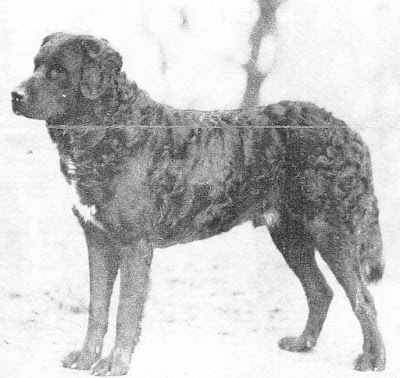Sunday, August 29, 2021
The Newfound Tragedy Of The Charlotte Christine
Charlotte Christine: Shipwrecked On Ulleung Island In 1873
(By Robert Neff)
"On Aug. 27, 1873, the Charlotte Christine, a German barque, departed Vladivostok bound for Chefoo (modern Yantai), China. We don't know much about the ship save that it was relatively small (286 tons) and apparently arrived in the Far East the previous year or so, mainly transporting goods, including cotton, along the Chinese coast.
The ship was commanded by Captain Fisher and had a crew of 11 men. It isn't clear why it was suddenly consigned to travel to Vladivostok or what it was transporting, but we do know there were 11 Chinese passengers in addition to the captain's wife, child and a large Newfoundland dog.
When the Charlotte Christine departed Vladivostok, the weather was good and Fisher ― who apparently had no experience sailing in the East Sea ― probably thought the voyage would be an easy one. However, on the second day of the voyage, the wind began blowing from the northeast and the ship encountered "thick heavy weather." Fisher was not the only one to be caught unawares by the storm ― several ships were caught up in it and at least two were reported to have been wrecked near Japan.
It was about 1 a.m. on Aug. 30, when a crewmember noticed what he thought was a sail in the distance off the starboard bow. The illusion was dismissed when, despite the howl of the wind, the ominous sound of breakers could be heard. The sail was actually "pinnacle rock" and despite Fisher's desperate attempt to steer the ship away from danger, it was too late; the ship struck aft upon a rock.
The anchors were dropped immediately and one of the ship's boats, with a line tied to it, was lowered into the sea but the waves were too powerful and it was promptly swamped. The boat and the two sailors in it were washed away. But there was no time to mourn the loss of the sailors.
The sea pounded upon the ship and wave after wave broke over her deck ― thumping the hull heavily upon the rocks. The captain ordered the fore and main masts to be cut away so as to lessen the strain upon the ship. It was about this time that they heard yelling coming from the shore ― the two crewmembers who had been swept away had somehow managed to make it to safety.
Several attempts were made to get a rope ashore so that the men could tie it to something and the rest of the crew and passengers could be ferried off the ship to the island. The first attempt was made with a lifebuoy, then the dog (it drowned in the attempt), followed by a couple of men who tried to swim to shore with the ropes tied around their chests but the heavy surf foiled them and they had to be hauled back in. Finally, after five hours of hard labor, "an empty water cask floated to the rocks" and two men were able to tie the rope to a nearby tree (the other end was tied to one of the remaining masts) allowing the crew and passengers to be brought ashore safely. By late morning the sea finally succeeded in smashing the ship to pieces.
The East Sea is a deep and vast stretch of water with very few islands and, other than the small Russian communities around Vladivostok and the western coast of Japan, there were no ports available ― the Korean Peninsula was still closed to foreigners. For the 25 castaways, despite being on a large island, things must have seemed nearly hopeless.
The Charlotte Christine had wrecked upon Ulleung Island (at that time known to the Europeans as Dagelet) and was relatively unexplored by Westerners. One early visitor noted the island was extremely rocky with a towering peak almost 1,000 meters tall and described it as being 'clothed with forest from the verge of perpendicular cliffs of 500 feet [152 meters].'
The shipwrecked survivors began exploring and discovered several empty Korean boats but found no trace of their occupants. They were probably unaware that for centuries the island had remained relatively uninhabited ― the only exception being Korean fishermen who would sometimes visit and also the annual visit by boat builders who harvested trees and built boats, but their sojourns were short.
When a British warship had visited in the late 1850s, it found only a 'few half-starved Korean fisherman' barely eking out an existence and denounced the island as a "weird and lonely spot." The island remained, for the most part, uninhabited until 1879 when a group of Koreans from Gangwon Province established a small permanent settlement.
As for the castaways from the Charlotte Christine, they gathered what they could from the ship's debris that washed ashore ― including the small boat despite being waterlogged and damaged. The island provided very little in the way of provisions. Fisher estimated they could survive for a month, 'with the provisions saved from the wreck, and the roots and shellfish which could be gathered.' It was obvious they could not depend on being found before their food supply was exhausted so they began to repair the small boat. The group agreed that if a rescue ship did not arrived by Sept. 12, they would send five men in the small boat to seek help from the Japanese ports of Shimonseki or Nagasaki. No one relished the idea of trying to make the journey in such a small boat.
Fortunately, on Sept. 10, a ship was spotted in the distance ― it was the Russian corvette Vitiaz bound for Nagasaki from Vladivostok. The small boat was immediately launched and managed to sail close enough to the Russian corvette to be noticed. Captain Nazimoff, the commander of the warship, had the castaways brought on board his ship and then transported them to Nagasaki ― arriving there on Sept. 13. What became of Fisher and his crew is unknown ― as in many of these early Korean encounters, the participants simply faded from the pages of the past."
Subscribe to:
Post Comments (Atom)









































No comments:
Post a Comment